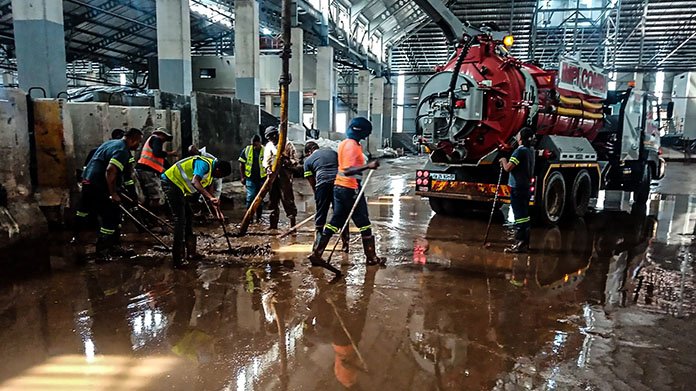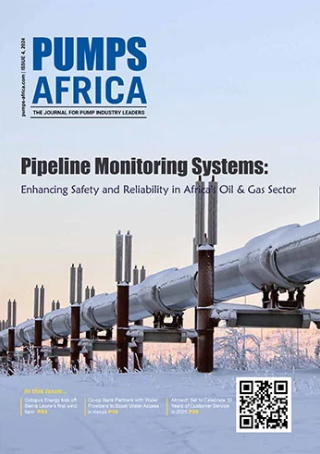In the wake of the flooding and landslides that happened in KwaZulu-Natal in April and May 2022, 448 people were left dead and more than 40 000 displaced, with damage to roads, schools, water infrastructure and businesses.
On 18 April, President Cyril Ramaphosa declared a national state of disaster. As repairs got underway, one of the first issues many flooded businesses faced was to get rid of the water and debris in their factories or warehouse premises. The Werner Pumps rental unit, a combination jetting and vacuum truck, was put to good use to help with the clean-up operations.
“We rented our unit to two companies for several weeks at a time to assist them in servicing their clients’ in Durban and the surrounding areas after the horrific flooding,” says Sebastian Werner, Managing Director at Werner Pumps. “It’s the first time that the unit has been used for disaster recovery efforts after flooding. It was good to be able to help in some way by sending the combination truck from our head offices in Springs down to our KwaZulu-Natal clients to help. It must have done a good job because one of the companies has now ordered one from us to assist with their ongoing pollution control and industrial clean-up operations.”
READ: Kenya launches water supply system in Naivasha Industrial Park
The rental unit is a combination truck that offers state-of-the-art hydraulically operated jetting and vacuum functionality. It’s available through Werner Water Recycling, the rental division (founded in 2013) of Werner Pumps, the leading manufacturer of high-pressure jetting equipment in South Africa.
Known as the Impi Unit, it offers a tilting 12.500 litre, 304 stainless steel tank, with a hydraulically-driven high-pressure pump capacity of 295L/Min at 135bar, and a vacuum pump with 1700 m3/hr suction capability. The high-pressure pump is fitted with a pneumatically operated regulating valve, making infinite pressure adjustment possible, thus increasing the safety of the operator during use.
“It’s ideal for everything from sewer and stormwater cleaning and maintenance, to sludge and slurry removal, separator cleaning, contaminated liquid recovery, recovering solids, and cleaning surfaces,” says Werner. “In the wake of a disaster, it can be used to clean up standing water or to clean smoke-damaged facilities. We’ve found there’s demand for the unit from municipalities and contractors to bridge a gap when they’re waiting on a unit, or for budget to become available, and for people who need it for a specific time-bound application.”
Ultimately, Werner says, the company would like to build up its rental fleet to service the growing demand. “When something happens and someone urgently needs a truck, as was the case with the flooding, we want to be able to send them one immediately,” he says. “Our aim has always to be a one-stop shop, and to ensure our customers are able keep operating at all times, so we’re finding ways to help them do that.”







